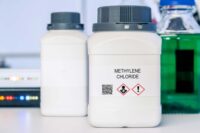Controlling the Recognized Hazards of Heat and Smoke
Wildfire smoke exposure and heat-related illnesses like heat stroke are recognized occupational health hazards. Are you doing all you can to protect your employees from these summertime risks? While there are no federal standards for heat illness prevention or wildfire smoke exposure, the Occupational Safety and Health Administration (OSHA) has a rulemaking to establish a […]










